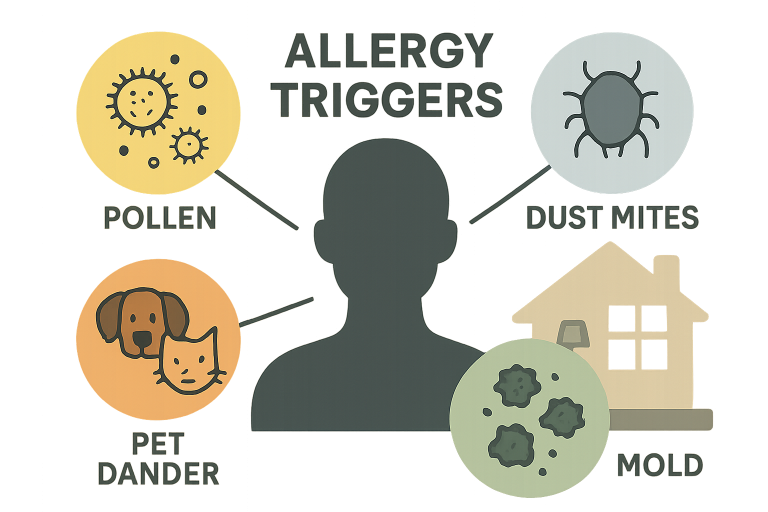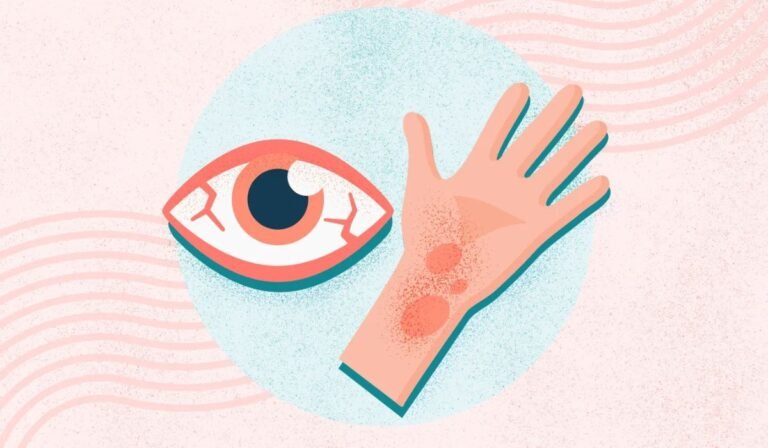Allergies affect millions of people worldwide and can have a profound impact on daily life. From sneezing fits and itchy eyes to congestion and persistent fatigue, allergy symptoms are more than just minor inconveniences—they can interfere with sleep, productivity, and overall well-being. Finding relief starts with understanding the sources of these symptoms and taking action to reduce exposure and manage reactions.
For those who are struggling to find effective solutions or face persistent symptoms, partnering with an allergy doctor in Plano, TX, can unlock tailored guidance and treatment options. With the right support and strategies, you can regain control over your comfort and health, enjoying a more active and fulfilling lifestyle.
Empowering yourself with knowledge is the first step in taking charge of allergies. Understanding your personal triggers, recognizing the ways these allergens enter your environment, and being proactive about relief measures can make a significant difference. While allergies cannot always be cured, there are multiple methods—ranging from self-care and home remedies to professional treatments—that allow most people to successfully manage their symptoms. By committing to consistent prevention and responsive care, you can minimize the disruptions allergies cause and reclaim your everyday quality of life.
Common Allergy Triggers
Allergies arise when your body’s immune system misidentifies a typically harmless substance as invasive, causing it to react as if there’s a real threat. This overreaction results in bothersome and, at times, debilitating symptoms. Understanding these triggers is essential in keeping symptoms at bay. Among the most frequent allergens are:

- Pollen: Pollen grains, released as part of the reproductive cycle of trees, grasses, and weeds, are responsible for the classic seasonal allergies many experience. Spring and fall bring heightened pollen levels, turning outdoor activities into an uncomfortable ordeal for sensitive individuals. Pollen can travel for miles and enter homes easily through open windows, doors, and even on clothing, which means limiting exposure is crucial during peak seasons.
- Dust Mites: Invisible to the naked eye, dust mites thrive in warm, humid places within the home, especially in bedding, mattresses, upholstered furniture, and carpets. Their droppings contain proteins that trigger allergies in many people, often resulting in ongoing symptoms like sneezing, a runny nose, and itching. Because dust mites flourish in bedrooms where we spend the most time, they can impact sleep quality and overall comfort if left unchecked.
- Pet Dander: People allergic to animals typically react to specific proteins in the saliva, urine, or dead skin (dander) of cats and dogs. Since pet dander particles are lightweight, they become easily airborne and can settle on all surfaces, making it nearly impossible to avoid for those sharing their home with pets. Sensitivity levels vary widely, but for some, even brief or indirect exposure can trigger symptoms such as watery eyes, sneezing, and difficulty breathing.
- Mold: Mold is a type of fungus that develops and spreads in moist, warm, or humid conditions—think bathrooms, basements, kitchens, or anywhere water leaks or high humidity persists. Mold spores travel through the air (indoors and outdoors), and inhaling them can provoke allergy symptoms like nasal stuffiness, cough, and exacerbated asthma. Since some molds are invisible but potent, controlling humidity, monitoring possible trouble spots, and cleaning regularly are important preventive measures.
Tips for Allergy Relief
Effectively managing allergies involves both avoiding triggers and seeking ways to ease flare-ups when they occur. These practical tips can make a substantial difference in how often and how severely you experience symptoms:
1. Monitor Pollen Counts
For those allergic to pollen, keeping track of pollen counts is a game-changer. Most local news outlets, weather apps, and online allergy resources provide daily updates, allowing you to adapt your plans. Try to schedule outdoor activities when pollen levels are lowest, generally after rainfall or later in the day. On high-count days, close windows, use air conditioning to purify indoor air, and change HVAC filters regularly to reduce outside allergens indoors. Wearing sunglasses and wide-brimmed hats can also protect your eyes when outdoors.
2. Maintain a Clean Home Environment
Routine cleaning is essential for keeping home allergens under control:
- Vacuum all carpets, rugs, and upholstery at least once a week, ideally with a vacuum equipped with a HEPA filter to ensure efficient allergen capture.
- Wash bedding, pillowcases, and blankets in hot water—at least 130°F—every week to eliminate dust mites and their residues. For extra protection, consider allergen-proof covers for pillows and mattresses.
- Wipe down all hard surfaces, including floors, shelves, and countertops, as dust and pet dander can accumulate quickly, especially in high-traffic areas.
- Reduce clutter, such as stacks of magazines or unused clothing, as these can harbor dust mites and pet dander.
- Control humidity using dehumidifiers or air conditioners, keeping levels below 50% to prevent mold growth and dust mite proliferation.
3. Use Air Purifiers
Air purifiers, especially those outfitted with high-efficiency particulate air (HEPA) filters, significantly reduce airborne allergens in homes. For maximum effect, place them in areas where you spend the most time, like bedrooms or living rooms. Make sure to follow the manufacturer’s recommended cleaning and filter replacement schedule. When used properly, air purifiers can reduce both visible and invisible sources of irritation, making indoor environments noticeably more comfortable.
4. Shower After Outdoor Activities
After time spent outside—especially during heavy pollen seasons—showering and changing clothes immediately upon returning home can prevent tracking allergens indoors. Pollen and other particles settle on your skin, hair, and clothing, and washing them off promptly can minimize the time you’re exposed. Make sure to wash your face and hands thoroughly as well, and toss worn clothes directly into the laundry.
5. Consider Over-the-Counter Medications
For many, non-prescription allergy medicines provide dependable symptom relief. Options include:
- Antihistamines: These medications can rapidly ease sneezing, itching, a runny nose, and watery eyes. Many are now available in non-drowsy formulas for daytime use.
- Decongestants: Effective in relieving nasal blockage, but should only be used for short periods, as prolonged use may worsen congestion or lead to side effects.
- Nasal corticosteroids: These are useful for persistent nasal symptoms, as they reduce inflammation and can provide long-term improvement with regular use.
If these remedies do not adequately control your symptoms—or you experience side effects—consulting with a healthcare provider is wise. A professional can recommend prescription medications or more advanced therapies tailored to your needs.
When to Seek Professional Help
While many people can manage mild allergies on their own, there are situations when expert intervention is necessary. Ongoing or intense symptoms, reactions that worsen despite home care, or complications such as asthma should be evaluated by a professional. Allergy specialists use in-depth exams and a variety of tests, such as skin or blood tests, to pinpoint your unique triggers. Advanced treatments like immunotherapy—administered through allergy shots or sublingual tablets—can help desensitize the body over time, reducing the impact of allergies in the long term.
If you’re located in North Texas and find allergies to be unmanageable, reach out to an allergy doctor in Plano, TX, to receive expert evaluation and a personalized care plan. Their experience and resources ensure you’ll have access to the best advancements in allergy diagnostics and treatment, so you can get back to living life on your own terms.
Conclusion
Successfully managing allergies requires active engagement with your environment, your habits, and sometimes, medical professionals. Recognizing what sparks your symptoms and adopting proven tips for reducing exposure can yield dramatic relief and improved day-to-day comfort. Whether you need minor adjustments at home or guidance from a dedicated allergy specialist, the path to fewer symptoms and better health is possible.
Today, implement these strategies and connect with trusted providers for ongoing support when needed. Allergies need not control your life—you have the power to manage them and thrive.
